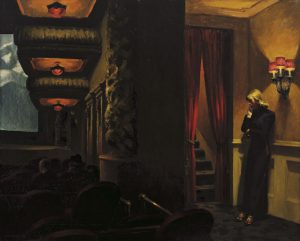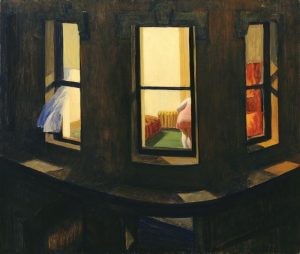“The vast, enclosing composition seemed at first to be painted entirely black, but slowly other colors became visible, deep browns and blackish reds, while vague shapes began to emerge.”
Steven Millhauser’s ability to craft the wonderment of the impossible through possible ways produces a narrat ive that reflects feasible realities, fabricating a sense of uneasiness and disturbance in worlds not that far off from our own. This can be displayed in his story “A Precursor of the Cinema” which depicts a frighteningly interactive form of painting; a cinematic masterpiece of perturbed art brought to life. You surrender to his words, lulled into a false sense of safety, and before you know it, something absolutely crazy has just taken place.
ive that reflects feasible realities, fabricating a sense of uneasiness and disturbance in worlds not that far off from our own. This can be displayed in his story “A Precursor of the Cinema” which depicts a frighteningly interactive form of painting; a cinematic masterpiece of perturbed art brought to life. You surrender to his words, lulled into a false sense of safety, and before you know it, something absolutely crazy has just taken place.
“A Precursor of the Cinema” visualizes the concept of motion pictures in an entirely new way, although not new? Rather, Millhauser depicts what moving images had the possibility of being, taking an idea once familiar and turning it into something not recognized by today’s standards. This almost feels like a “what could have been” or even “what might be” situation. This reality is not unfathomable, although harboring fantastical qualities.
“He teases us, this man who is neither one thing nor another, who swerves away from the history of painting in the direction of the cinema, while creating a lost medium that has no name.”
The story takes place in a time prior to our own and gives off the impression of a past age. We follow the narrative of an artist by the name of Harlan Crane , a painter who has uncovered the ability to move his work. He has essentially created a way to make interactive art through means not properly defined and concrete, but it’s best to assume that fantastical technology plays some formative part.
, a painter who has uncovered the ability to move his work. He has essentially created a way to make interactive art through means not properly defined and concrete, but it’s best to assume that fantastical technology plays some formative part.
His works, while beginning as docile and harmless, began to transition into properties much more ominous, giving the impression that something baleful and menacing is unfolding. Which is an interesting concept, given the history that art has had in terms of societal censorship. Plato once famously stated that because art is an imitation of life and events, it creates an illusion of ordinary experiences, and therefore, it is a copy of a copy of a form. An untrue imitation, a falsification of natural life. So in theory, works of art at best are entertainment, and at worst a dangerous delusion.
“The time may be near when the image will be released from its ancient bondage to cave wall and frame and screen, and a new race of beings will walk the earth. On that day the history of the cinema will have to be rewritten, and Harlan Crane will take his place as a prophet.”
Art can be illusion for different people and for different reasons. I liked how you add a philosopher into your post to help explain your thoughts on this one story.